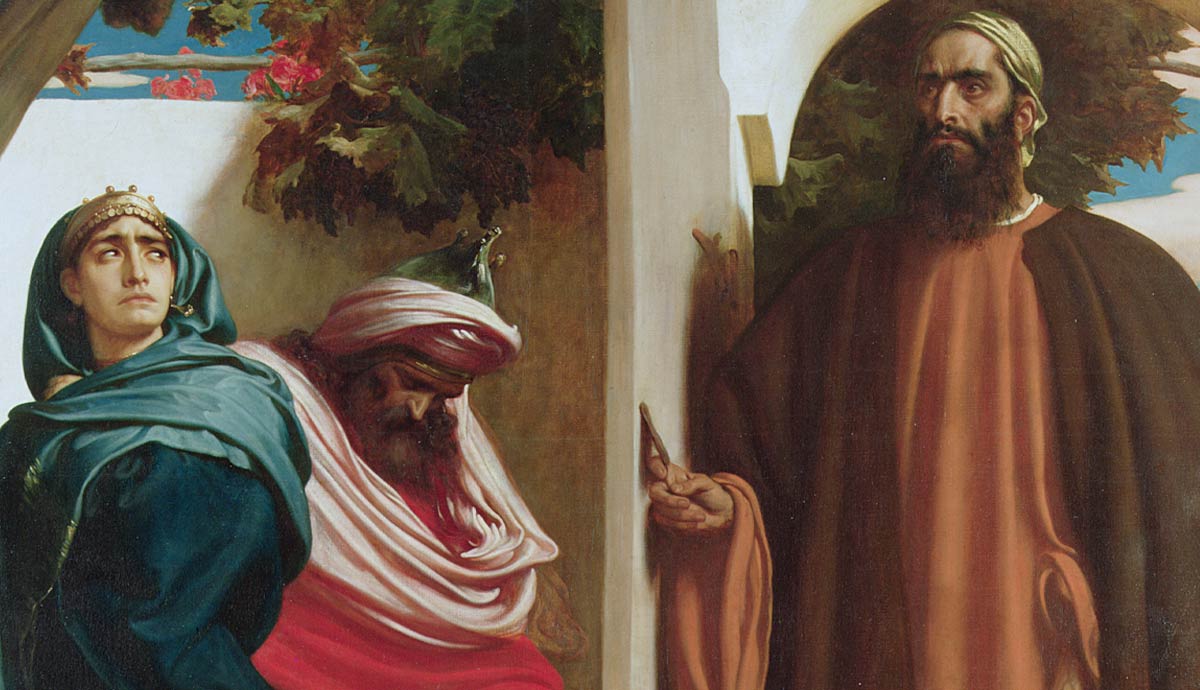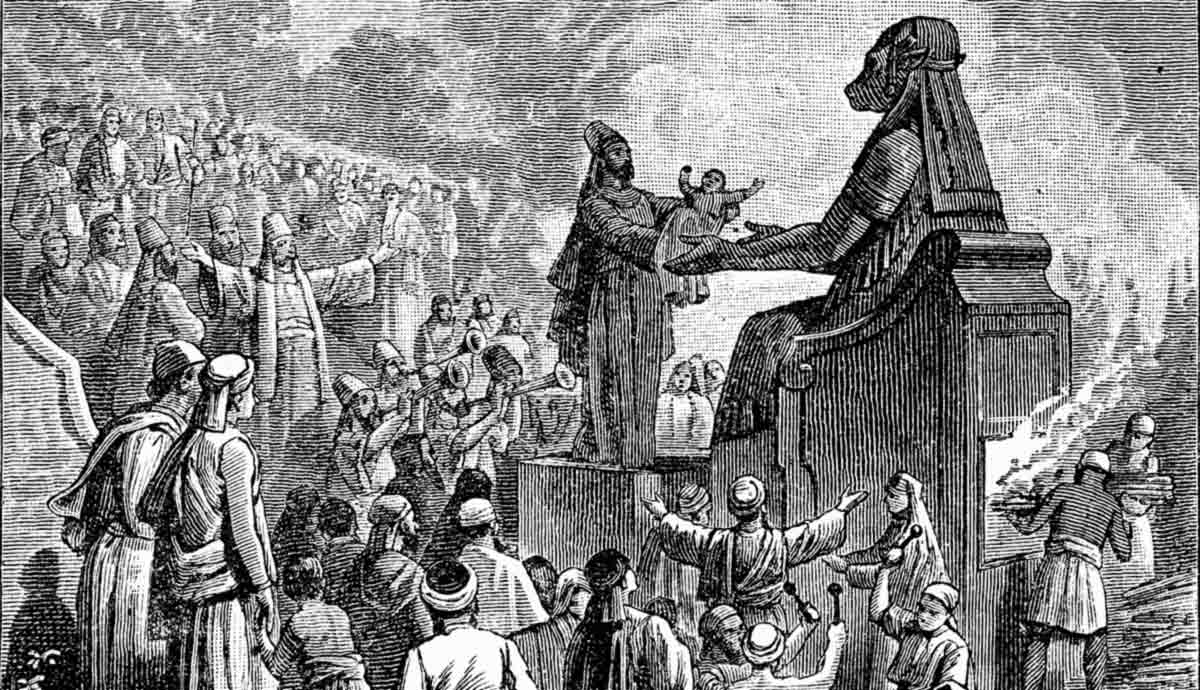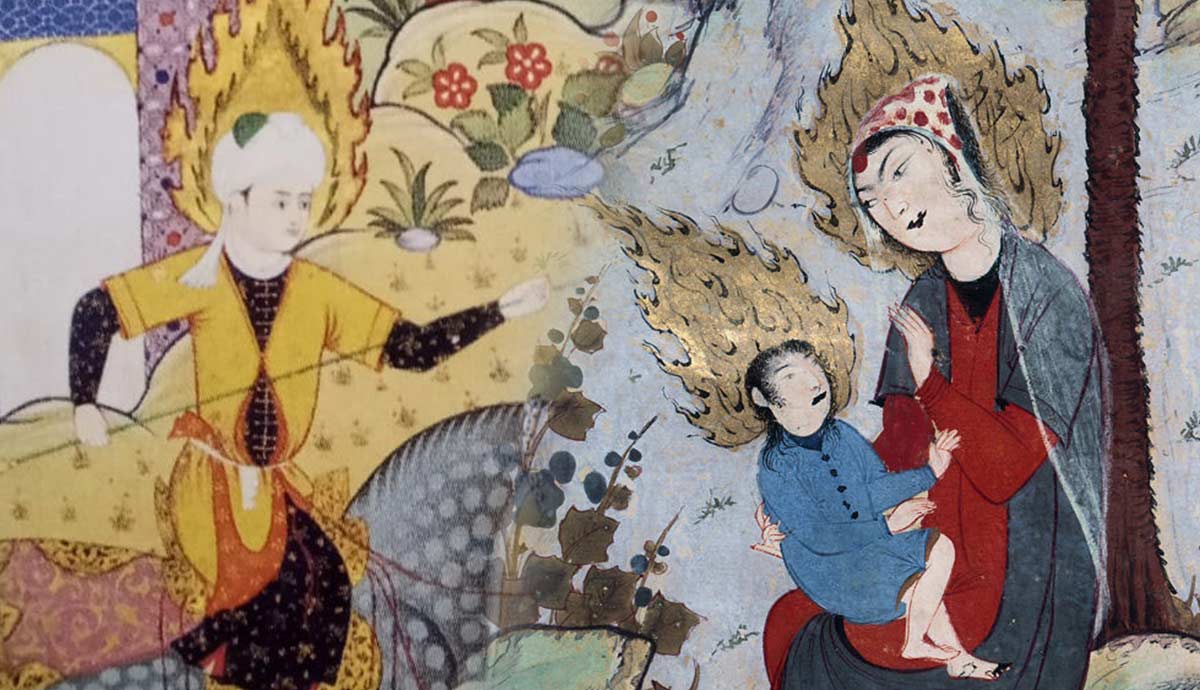
According to the Bible, Ahab was the worst king of Israel. His marriage to Jezebel, an avid worshiper of Baal, resulted in him leading his people into apostasy and worshiping Baal, rather than Yahweh, who saved the Israelites from slavery in Egypt. The Bible details his moral and spiritual failures. Because of this emphasis, most Christians are unaware of King Ahab’s secular legacy. In this article, we will briefly look at what the Bible reveals about Ahab, but we will also delve deeper to see what we can learn about the man.
Ahab in the Bible Narrative

The Bible presents Ahab as a weak king dominated by his Phoenician wife, especially on matters of religion. She was a devout Baal worshiper. Ahab ordered the construction of a temple and altar to Baal in Samaria, the capital of the Northern Kingdom of Israel (1 Kings 16:32). Due to Jezebel’s influence, “450 prophets of Baal and the 400 prophets of Asherah” ministered under state sponsorship in Israel (1 Kings 18:19). Baal worship had become all but the state religion of the Northern Kingdom to the extent that the prophets of God had to go into hiding to survive (1 Kings 18:4).
The showdown between the prophets of Baal and Elijah should have been enough to settle the matter, but the ensuing pursuit of vengeance against Elijah by Jezebel indicates that she was the primary instigator of religious persecution against the practice of Yahweh worship in Israel.
The story of Naboth’s vineyard shows much of Ahab’s character. He was downcast when Naboth refused to trade or sell his vineyard. Jezebel plotted to have Naboth falsely accused by “two worthless men” of cursing God (1 Kings 21:10, 13) and, on the account of two witnesses according to Israelite law, Naboth was found guilty and executed (Deuteronomy 17:6). That opened the door for Ahab to take possession of the vineyard, denying the descendants of Naboth their inheritance.
God rebuked Ahab for the conspiracy against and murder of Naboth via the prophet Elijah. Ahab seemed to genuinely repent for his actions so God postponed the destruction of the lineage of Ahab until after his lifetime, when his son would rule.

Ahab, however, was not completely converted. When he allied with Jehoshaphat, the King of Judah, to retake Ramoth-Gilead from the King of Syria, he consulted the prophets of his god, not the prophets of Yahweh. Jehosaphat insisted on calling a prophet of God to prophesy, and Ahab reluctantly sent Michaiah, who foretold their defeat and Ahab’s death in battle, unlike the lying prophets of Ahab’s pagan god. To avoid the outcome the prophet of Yahweh proclaimed, Ahab disguised himself, but still died after a stray arrow struck him.
Ahab’s descendants, who continued in their wicked ways, were destroyed as prophesied. Most of them were killed off by Jehu or on his instruction in a divinely sanctioned revolt.
Ahab in Extra-Biblical Sources

The historicity of Ahab is beyond question. The historical record indicates he reigned around 874-853 BCE. Unlike the biblical record that reflects primarily on his religious apostasy and moral failures, the historical record is not concerned with such perspectives. It considers his political, military, and economic activity and influence.
In 1867, archaeologists discovered the Kurkh Monolith, an Assyrian stele erected by King Shalmaneser III in modern-day Turkey. The find describes the Battle of Qarqar (853 BCE) between the forces of the Assyrians and a coalition of kings from the Levant. It records that “Ahab the Israelite” significantly contributed to the military forces fighting Shalmaneser. Ahab reportedly contributed 2,000 chariots and 10,000 infantrymen. This is evidence of Ahab’s military power and his kingdom’s prosperity. If correct, it reflects the biblical portrayal of Ahab as a ruler able to wage war on a notable scale in the Levant. Some scholars have warned that the numbers recorded by the Assyrians may be exaggerated to increase the perception of their own power in opposition to such numbers.
The Tel Dan stele and the Moabite Stone do not mention Ahab by name but align with the timeline and context during and shortly after Ahab’s reign, attesting to the veracity of the biblical narrative.
The Tel Dan Stele, dated to around 841 BCE, was discovered in Northern Israel and refers to the “House of David” and the death of a king (likely Joram, Ahab’s son). The stele originated with an Aramean king and aligned with the timeline and political context of continual conflict between Israel and Aram-Damascus. Ahab fought against Aram (Syria) on several occasions. He went to war with Ben-Hadad, King of Aram, who laid siege to Samaria (1 Kings 20:1-21), and later fought him in the plains (1 Kings 20:22-30).

The Moabite Stone dates to 840 BCE, close to that of the Dan Tel stele. It records the Moabite king Mesha’s rebellion against Israel, which aligns with the narrative of 2 Kings 3. The stone mentions the oppression of Moab by King Omri and his successors, which would have included Ahab. It aligns with the portrayal of Ahab as a significant force in the Levant who campaigned against neighboring nations.
These historical records, though not always reflecting directly on Ahab, show that the biblical narrative of a politically, militarily, and economically prosperous Israel is correct. Ahab, as the Kurkh Monolith reflects, was a powerful, rich, and politically astute king during the 9th century BCE.
Ahab, the Man

From the biblical and extrabiblical sources, we can construct a more comprehensive profile of King Ahab as a person. As a prince in the court of his father, King Omri, Ahab had a privileged upbringing that exposed him to not only the art of politics but also to many pagan practices.
Omri was a strong and effective leader of Israel. The Moabite Stone testifies that Omri oppressed the Moabites, and some ancient Assyrian records referred to the house of Omri long after his death, indicating his notoriety and influence. His father’s proficiency in politics continued to influence Ahab’s rule. His marriage to Jezebel, a Phoenician princess, and daughter of Ethbaal, King of the Sidonians, strengthened him politically. According to the historian Josephus, Ethbaal was a former priest of Astarte who murdered the King of Tyre to take the throne. Jezebel was, therefore, the daughter of a king-priest and brought her prowess and convictions to Ahab’s kingdom. Ahab’s pagan upbringing, in conjunction with Jezebel’s dedication to Baal, laid the foundation for national apostasy in Israel.

1 Kings 16:30 and 33 state: “And Ahab the son of Omri did evil in the sight of the LORD, more than all who were before him” and “did more to provoke the LORD, the God of Israel, to anger than all the kings of Israel who were before him.” His life consisted of full-blown apostasy and a failure to provide spiritual guidance to the people of God.
Jezebel plays a significant role in the narrative of Ahab’s reign, suggesting she ruled the roost. Her usurpation of the authority to seal letters to the elders and leaders of the city where Naboth lived shows she was not submissive to Ahab, and the Bible shows no sign of Ahab trying to rein in the actions of his wife in this matter or the persecution of the prophets of Yahweh. Ahab also did not show moral fortitude when she had Naboth murdered. Ahab was greedy, weak-willed, self-centered, emotionally immature, and morally corrupt.

That said, his legacy, from a secular perspective, does show that he was a notable king in the Levant during the 9th century BCE. His kingdom wielded significant military power, fortified cities, and developed infrastructure, indicative of economic prosperity during his rule. The alliances forged by his marriage and that of some of his children show that his kingdom was held in high regard by other nations during his reign. Like his father, he was proficient at ruling from a political, economic, and strategic perspective.
In the end, Ahab’s legacy shows in the generation that followed his rule. His daughter with Jezebel, Athaliah, married Jehoram, the king of Judah. The marriage was intended to strengthen political ties between Israel and Judah, but significantly weakened the religious and moral fiber of the Southern Kingdom. She played the part of Jezebel in the Kingdom of Judah (2 Kings 8:18). Later, Athaliah became the only woman to rule Judah outright after killing off many of the royalty (2 Kings 11:1).
From a secular perspective, Ahab was a rich and powerful king in the Levant who held considerable political sway. From a religious perspective, the Bible portrays him as a weak king who, in many ways, was dominated by his wife, Jezebel. The Bible finally reflects on Ahab with these words: “There was none who sold himself to do what was evil in the sight of the LORD like Ahab, whom Jezebel his wife incited. He acted very abominably in going after idols, as the Amorites had done, whom the LORD cast out before the people of Israel.” (1 Kings 21:25-26)










